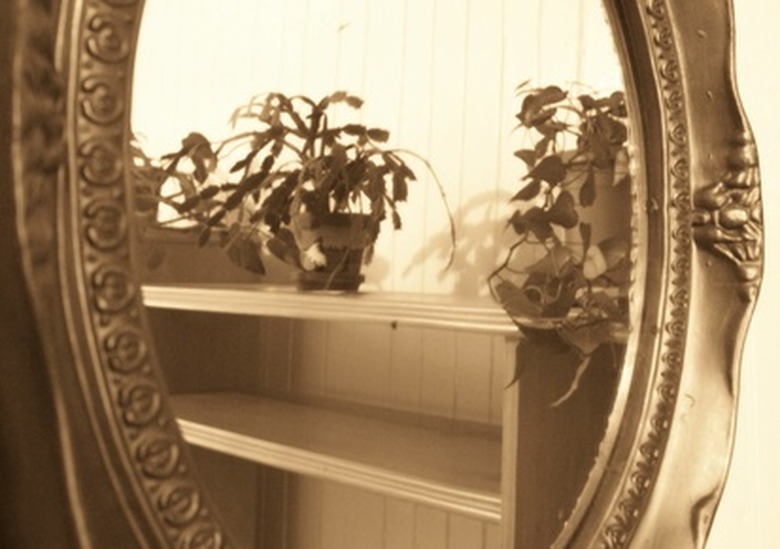How To Repair A Discolored Mirror
Things Needed
-
For removing the mirror:
-
Screwdriver
-
Hammer
-
Putty knife
-
For repairing with toothpaste:
-
Toothpaste
-
Soft cloth
-
For repairing with foil:
-
Aluminum foil
-
Glue or tape
-
Soft cloth
-
For resilvering:
-
Resilvering kit
-
Latex gloves (if not included in the resilvering kit)
Tip
For replacing or re-silvering a mirror, be sure to call around to compare prices. You may be able to find a mirror online, which can be installed by a local contractor or handyman.
Warning
Re-silvering a mirror yourself is a potentially hazardous process, as many older mirrors contain mercury. In addition, the chemicals used are dangerous to the skin and respiratory systems if you come into direct contact with them.
When you look in a mirror you want a clear, crisp reflection. Sometimes, however, a mirror becomes discolored, and prevents you from being able to see a proper image.
When a mirror is discolored, often the cause of the discoloration is the breakdown of the silver backing of the mirror. The silver backing can break down because of age, water, cleaning solvents or poor initial craftsmanship.
Step 1
Determine the best way to fix the mirror by noting where the discoloration is and how extensive it is. If the mirror is an antique or very large in size, it may be best to seek the advice of a professional. If it is a smaller mirror that is discolored in the corners, discolored overall, or discolored because of a scratch, you can probably fix it yourself.
Step 2
Replace all or part of the mirror to fix discolored corners. You could have a professional cut off the discolored corners and seal the mirror with extra mirror edge sealant. You may be able to purchase mirror edge sealant yourself and re-apply it if necessary.
Additionally, depending on the location of the mirror, you may want to consider moving it. For example, a mirror just over the bathroom sink may have been damaged by water getting into the corners; raising it an inch or so could prevent this from happening. Discoloration in the corners is often caused by water or cleaning solution affecting the backing of the mirror.
If the discoloration was caused by cleaning materials getting into the corners, you'll also want to alter your cleaning methods by applying the glass cleaner to a cleaning cloth and wiping the mirror, as opposed to spraying the mirror with cleaner and then wiping it.
Step 3
Re-silver or replace the mirror to fix an overall discoloration. It is possible to re-silver a mirror either professionally or by yourself, though if the mirror is an antique, you may be advised to leave it as is. If you wish to re-silver the mirror yourself, you will need a re-silvering kit and a room with plenty of ventilation.
Step 4
Repair a scratch that is discoloring the mirror with toothpaste or aluminum foil. If the scratch is in the front, you can try to fill in the scratch with some toothpaste–not gel–and gently buff with a soft cloth. If the scratch is in the back, you'll need to carefully remove the mirror. If it is a very large scratch, you may again be looking at re-silvering as an option. However, if it is a small scratch, you can carefully take a piece of very smooth aluminum foil and cover the scratch with it by taping it to the back of the mirror. Depending on the smoothness of the foil and the size of the scratch, this may or may not do the job.
